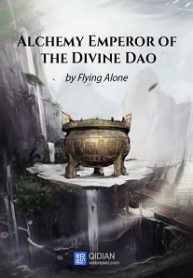The Rise Of Australasia - Chapter 353
Chapter 353: Chapter 305: Wolves Smoke Rising
Please continue reading on ΒOXΝʘVEL.ϹΟM .
As time entered the end of 1911, people all over the world finally breathed a sigh of relief, having made it through a year filled with crises and conflicts.
Throughout 1911, there was hardly any good news for European citizens.
The Second Moroccan Crisis intensified the confrontation between the two major European military blocs, deepened tensions between the United Kingdom and Germany, and further accelerated a more radical naval arms race.
What’s more, all European powers joined this naval arms race, which means these powerful countries had a clear perception that war was imminent and they were preparing for it.
Apart from that, major European countries were also expanding the scale of their armies. From the expansion of 300,000 troops in the Italian Austro-Hungarian Empire to France, Russia, and Germany’s expansion of 500,000 troops, it shows the severe situation Europe is facing, and war seems to be on the brink.
The actions of these powerful countries to expand their armies and navies have also led to an explosive growth in their military enterprises.
A simple example is the renowned German military industrial enterprise, Klub Factory. In 1873, it had only 9,000 employees; by 1902, this number increased to 43,000. By the end of 1911, the number of employees in the Klub Factory had reached 70,000.
The military industry in Britain is also massive, employing over 100,000 people.
British military industry has two main characteristics. First, it prioritizes the development of warships and merchant shipbuilding, which is consistent with Britain’s emphasis on its navy. Secondly, private military factories hold an important position, which is different from the royal arsenals in Australasia.
In Australasia, royal military factories account for 87% of all military factories, and only a small portion of weapons that other factories are unwilling to produce are made by private military workshops.
Apart from this, the armaments industries in France, Russia, and the Austro-Hungarian Empire are huge as well. The military preparations and numbers of soldiers of these powerful countries also benefit from the massive military industries.
This can be seen from Australasia as well. Currently, there are about 15,000 employees in all sectors of the military industry in Australasia.
If the hidden aeronautical research rooms and agricultural machinery factories are also considered, the number of employees in the military industry has exceeded 20,000.
(vitag.Init = window.vitag.Init || []).push(function(){viAPItag.display(“vi_765923973”)})
Compared to the expansion of regular standing armies, the number of reserve soldiers brought by the major European countries is even more exaggerated.
Except for the British Empire, the focus of European powers’ military expansion is actually the army.
As a result, so far, the number of military preparations and soldiers among major European countries is extremely exaggerated.
At present, among all the powerful countries in Europe, Russia has the largest number of soldiers, with 1.1 million in the regular army and 5.65 million in the reserve.
France ranks second with 710,000 regular troops and 5 million reservists.
Germany follows closely, with 700,000 regular troops and 4.9 million reservists.
The Austro-Hungarian Empire has 400,000 regular troops and 3 million reservists, Italy has 380,000 regular troops and 1.8 million reservists, and the British Empire has 250,000 regular troops and 1.2 million reservists.
Although the major European countries have already announced their military expansion, the progress of the expansion is not the same.
Currently, the smoothest expansion should be in Germany and France. So far, they have recruited more than 200,000 reservists into their regular forces and have started long-term training.
On the other hand, the countries with slower military expansion progress should be the Russian Empire, with the largest number of reserve soldiers.
It is undeniable that the decadence of this country is shocking. Even though the expansion has been announced for several months, so far only tens of thousands of soldiers have been recruited and they have not even reached their designated training locations yet, still being transported en route.
If the expansion of these powerful countries is completed, Europe may face a vast war involving tens of millions of soldiers during the future wartime, and the loss to major European countries is immeasurable.
Aside from the confrontation between the two major European military blocs, the shadow of the Balkans is also becoming increasingly dense.
The Balkan countries are either preparing for war or preparing within war.
To prepare for future wars, the Balkan countries, such as Bulgaria, Serbia, Greece, and Mendinero, have all announced military expansion plans. The armies of Bulgaria and Serbia have already surpassed 300,000 and 200,000 troops, respectively, and even the smallest Mendinero has reached 35,000 soldiers.
With the support of the Russian Empire behind the Balkan League, the Balkan countries naturally purchase the weapons and equipment needed for their expansion from Russia.
For this reason, the Russian Empire has eliminated some weapons currently in service and sold them to Balkan countries at prices slightly lower than the market price.
As for the Russian Empire, in addition to the previous order of 50,000 rifles, it has also ordered 150,000 rifles and tens of millions of bullets from Australasia to prepare for domestic military expansion.
This has made Arthur feel the huge profits from selling armaments. Even though the war has not yet started, and only Russia is ordering weapons from Australasia as European countries prepare for war, the military factories have still made hundreds of thousands of Australian dollars.
If war truly breaks out and European countries urgently need weapons, the profits from the arms trade could expand to tens of millions or even hundreds of millions of Australian dollars.
For this reason, Arthur generously provided tens of millions of Australian dollars in funds to the Royal Military Factory, allowing the factory to work at full steam to produce at least one million rifles, billions of bullets, tens of thousands of firearms, and millions of shells for future wars.
After all, within Australasia, there are British weapons, German weapons, and weapons and equipment developed by Australasia itself.
And within Europe, the more popular ones are British and German weapons, and there is basically no difficulty in exporting weapons.
Arthur even thought that if military aircraft were widely used in World War I and countries showed great interest in them, then it might be possible to build a large number of the first two generations of aircraft and sell them on a large scale.
After all, Australasia’s military aircraft research has already reached the third generation, with the research of the fourth generation also underway.
As long as the fourth generation of military aircraft is successfully researched in the future, selling the previous two generations to the major powers of Europe would not affect Australasia’s aircraft research. Besides, due to the impact of the war, it is impossible for them to catch up with Australasia in a short period.
Moreover, the cost of these aircraft can range from tens of thousands to even hundreds of thousands of Australian dollars. The profits from selling them to European countries on a large scale will not be lower than those from exporting weapons.














